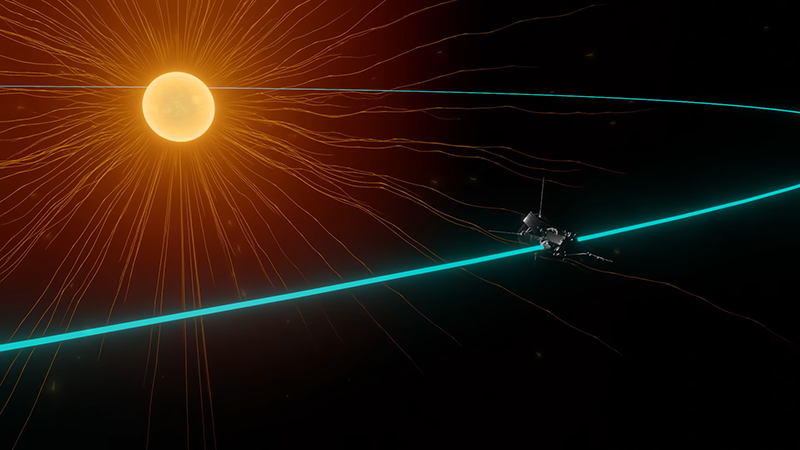.gif)
NASA's Parker Solar Probe touches the sun for the first time, a historic expedition giving more discoveries for scientists to understand the sun.
 |
Render of spacecraft near the sun
|
Parker Solar Probe touches the Sun!
Their Scientists say that this feat is similar to astronauts first landing on the Moon. As the spacecraft circles around the solar surface, it enabled them to discover what's within the solar wind—the flow of particles from the Sun that can influence the Earth's inhabitants.
Flying so close to the Sun, Parker Solar Probe now senses conditions in the magnetically dominated layer of the solar atmosphere– the corona–that we never could before, said Nour Raouafi, the Parker project scientist at the Johns Hopkins Applied Physics Laboratory in Laurel, Maryland. We see evidence of being in the corona in magnetic field data, solar wind data, and visually in images. We can actually see the spacecraft flying through coronal structures that can be observed during a total solar eclipse.
NASA mentions the Sun does not have a solid surface, unlike the Earth. However, it does have a superheated atmosphere, which is composed of solar material that is gravitationally and magnetically bonded to the Sun. As the material moves away from the Sun due to increased heat and pressure, gravity and magnetic fields become too weak to contain it.
 |
| The Parker Solar Probe's journey |
That point is known as the Alfvén critical surface which marks the end of the solar atmosphere and the beginning of the solar wind as the space agency claims. Solar material having enough energy to pass that limit creates the solar wind, which carries the Sun's magnetic field with it as it speeds through the solar system to Earth and beyond. Moreover, the solar wind moves so fast beyond the Alfvén critical surface that waves inside the wind can never travel fast enough to return to the Sun, breaking their connection.
Although until now, their researchers were still unsure exactly where the Alfvén critical surface lay. The researchers have estimates based on the remote images collected from the corona, which had put it somewhere between 10 to 20 solar radii from the surface of the Sun which translates to 4.3 to 8.6 million miles. That is of course if their deductions were correct.
In addition to defining the Alfvén critical surface lay boundary, the latest flyby also allowed the spacecraft to further examine magnetic zigzag structures in the solar wind. The structures, described as "switchbacks" by scientists, are widely present near the Sun. The switchbacks, however, have now been linked to funnel-shaped magnetic fields that emerge from the Sun's outer shell, or photosphere. The magnetic funnels, according to project scientists, may also be the source of cosmic wind. However, it appears that NASA will need to send Parker even closer to the Sun in the future to confirm that hypothesis.
For the space agency's full report you may go to this link.
What do you guys think?

.gif)




















Post a Comment